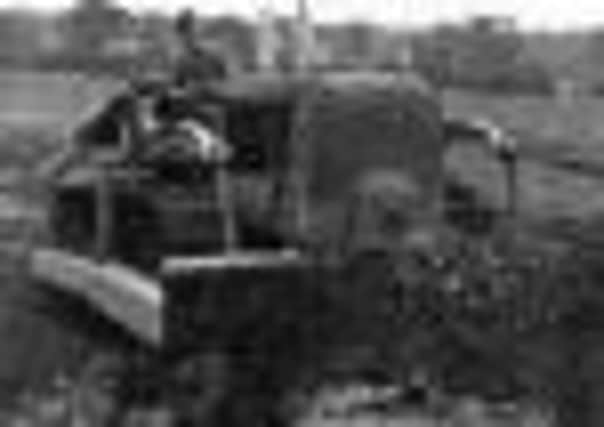DOWN MEMORY LANE: Airfields built just for D-Day


Five of these would have been the established airfields of Tangmere, Westhampnett, Merston, Ford and Thorney Island.
The others would have been temporary airfields known as Advanced Landing Grounds (ALGs) constructed at Funtington, Apuldram, Selsey and Bognor.
Advertisement
Hide AdAdvertisement
Hide AdBy 1942, it had become obvious additional airfields would be required for an Allied assault on Europe, particularly during the build-up and during the actual landings.


The need would be for rudimentary airfields that would require only basic facilities for ‘day only’ operations.
These Advanced Landing Grounds would need metal mesh (known as Sommerfield Track) runways, refuelling and rearming points, hard standings and a few simple metal prefabricated Blister hangars for undercover routine maintenance and checks.
Accommodation would be under canvas and using nearby requisitioned houses.
Mustang squadrons


Advertisement
Hide AdAdvertisement
Hide AdFuntington ALG, to the west of Chichester, was ready for operations by the summer of 1943 and on September 15, two Mustang squadrons moved in.
Offensive reconnaissance sorties began with occasional deep penetration missions undertaken until the squadrons returned to Odiham a month later.
At the beginning of April 1944, an all-Canadian Typhoon Wing arrived and was tasked with attacking V1 flying bomb (‘Noball’) sites in northern France.
On April 20, the Canadian No 144 Wing, commanded by JE (Johnny) Johnson, arrived with its Spitfire IXB aircraft.
Advertisement
Hide AdAdvertisement
Hide AdIntensive seek and destroy operations and ‘Ramrods’ (day bomber raids escorted by fighters) were undertaken until the Wing left for Ford on May 12.
Two days later, a Mustang Wing of three squadrons arrived and commenced operations.
Typhoon Wing
In February 1943 construction began on a site adjacent to Chichester harbour near the village church of Apuldram.
After the work had been completed, a Typhoon Wing moved in and commenced training, culminating with an attack on the enemy held Abbeville airfield.
Advertisement
Hide AdAdvertisement
Hide AdOn June 30, an interesting event occurred when an American B17 four-engined bomber aircraft was seen orbiting over the airfield. The aircraft made an approach over Donnington and Stockbridge and made a safe landing.
One of the crew was the actor Clark Gable.
Acting as a cameraman, he was making a recruiting film and flew five missions in total, including the one that ended in the emergency landing at Apuldram.
It is said that, to the delight of the local female population, he attended local dances in Chichester before the B17 departed after being repaired!
Spitfires
At the beginning of April 1944 a Wing of Czech Spitfires arrived and was tasked up to D-Day with a variety of missions including ‘Noball’ sorties, bomber escort duties and offensive patrols.
Advertisement
Hide AdAdvertisement
Hide AdConstruction work commenced in February 1943 near the village of Church Norton and Selsey ALG was completed by the spring for a Typhoon squadron and a Spitfire squadron to commence training and operations.
The airfield was reopened on April 1, 1944 and three Spitfire dive-bomber squadrons arrived to escort bomber missions in the weeks up to D-Day.
Bognor ALG was opened on June 1, 1943 and was home to three Spitfire squadrons which were tasked with conducting Ramrod missions.
On March 31, 1944, two Norwegian squadrons and an RAF squadron, No 66, all equipped with Spitfire Mk IX fighter bombers, arrived and attacked enemy coastal positions and V1 sites up to D-Day – June 6, 1944.
Get in touch
Advertisement
Hide AdAdvertisement
Hide AdHave you got a story or photographs you would like to see featured on the Down Memory Lane page?
You can email details to [email protected].
Alternatively, write to The Observer, Unicorn House, 8 Eastgate Square, Chichester, PO19 1JN.